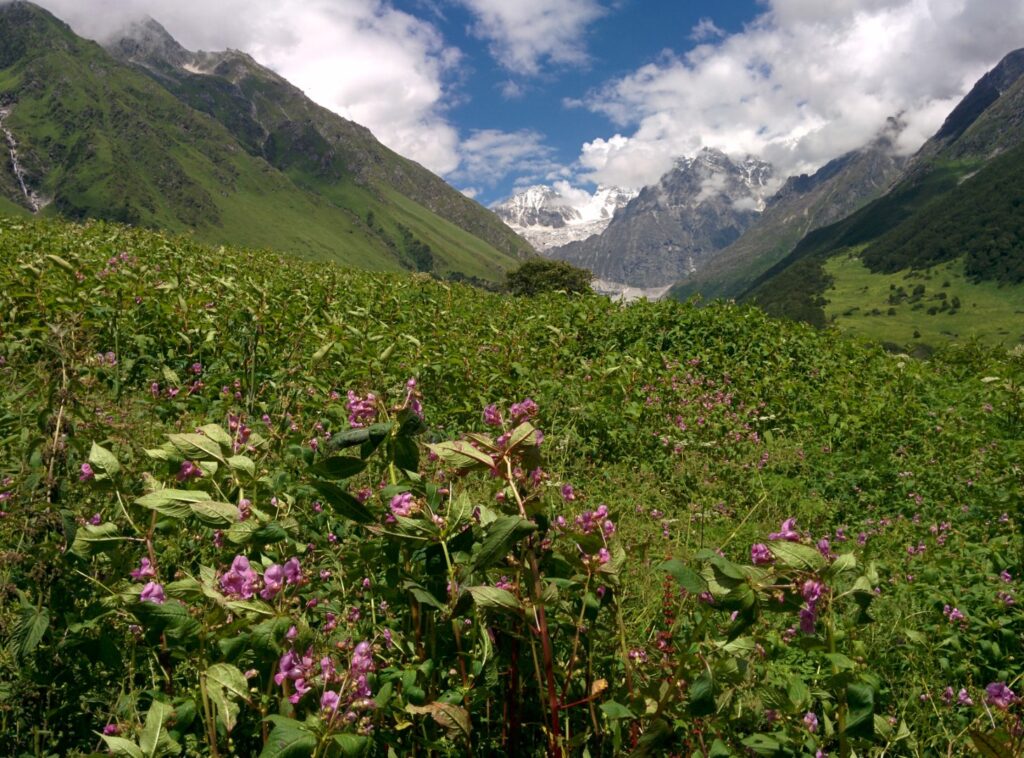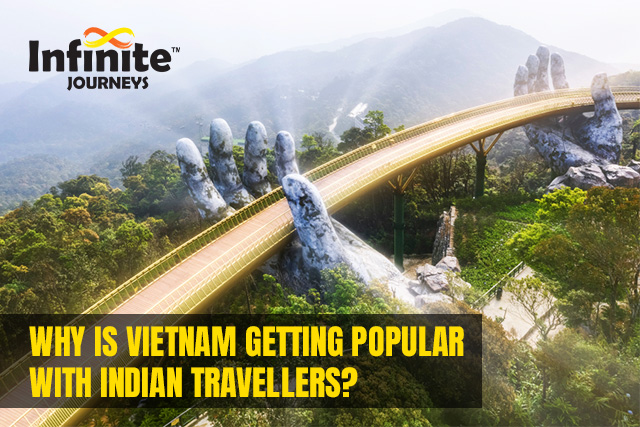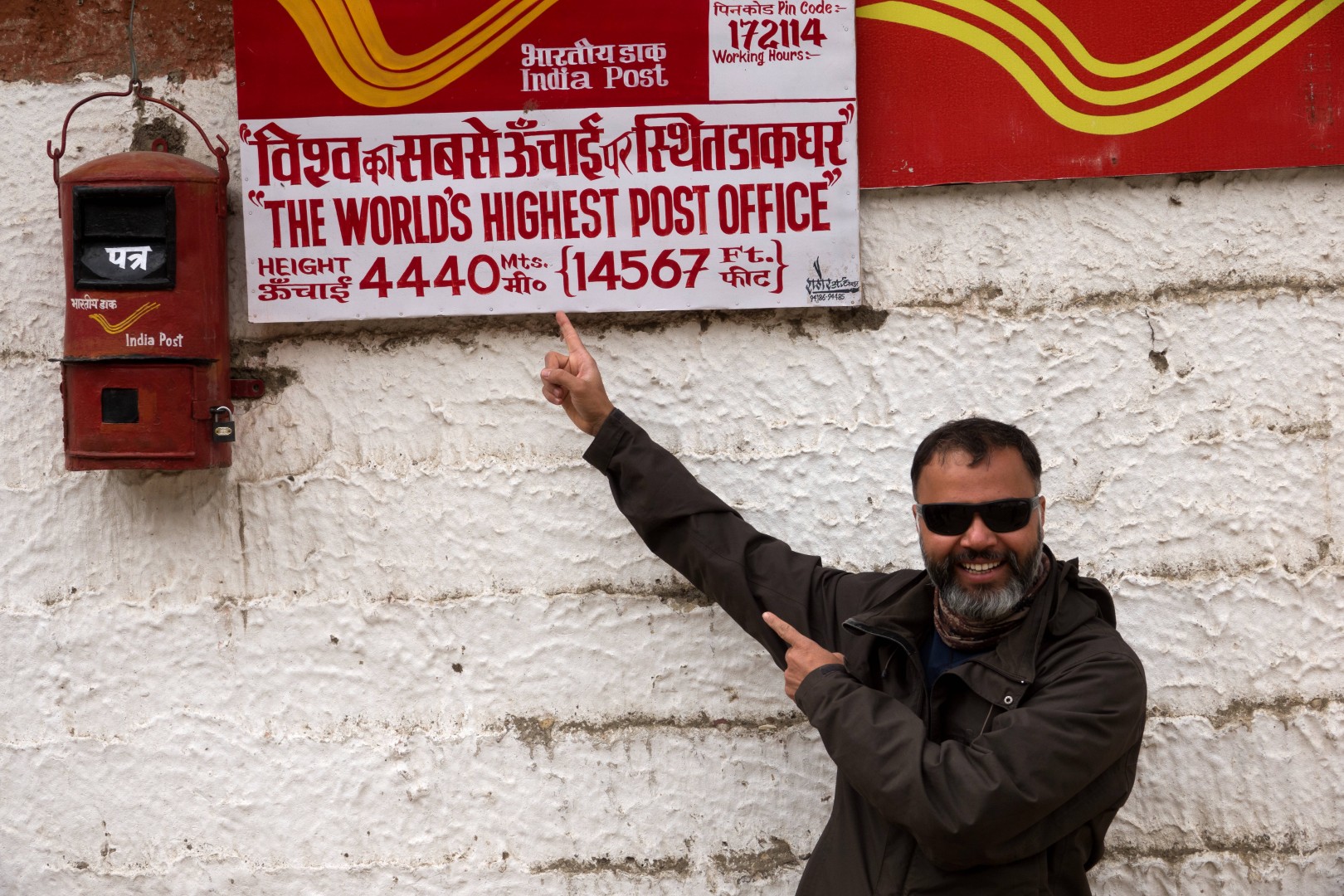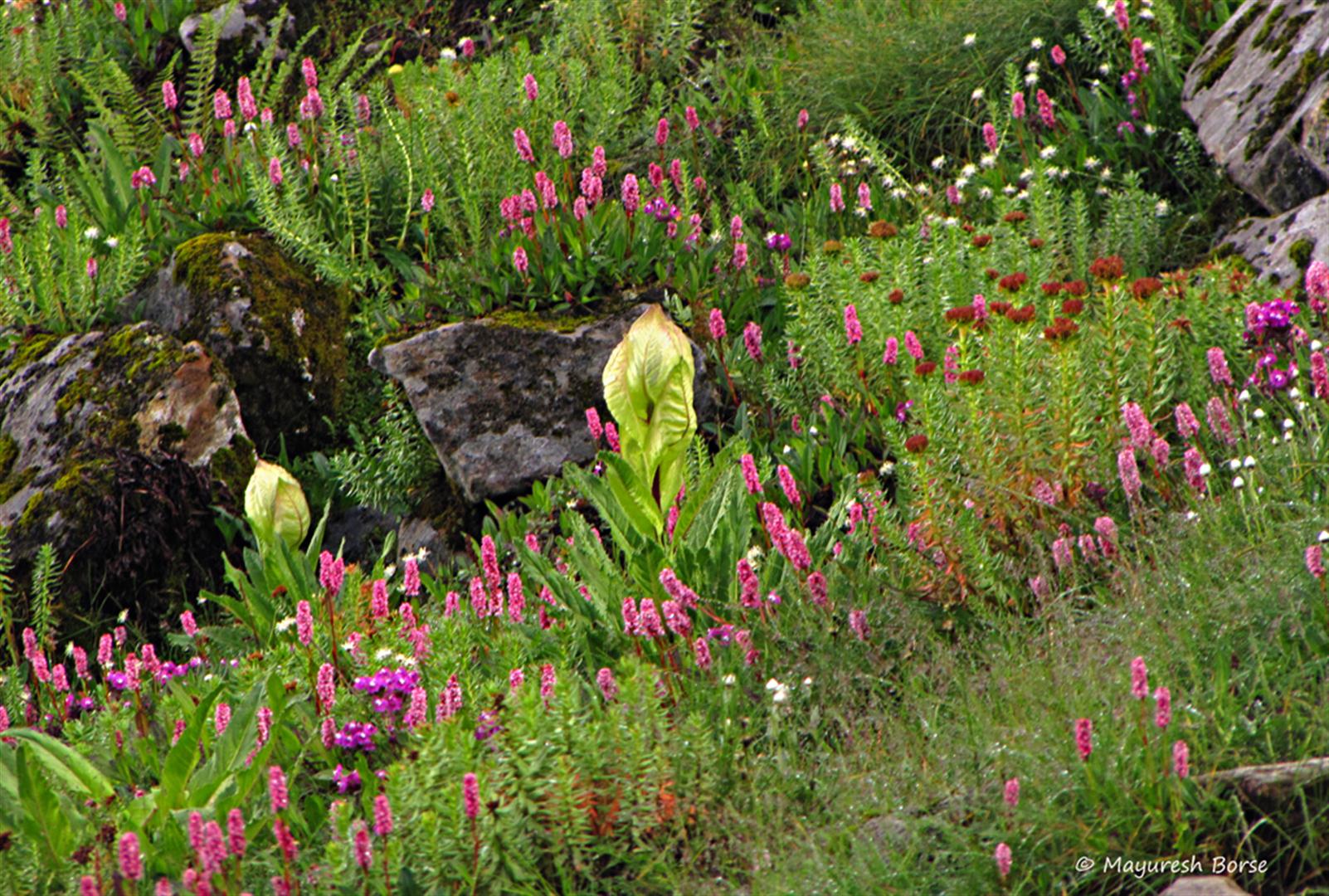City slickers, make notes. trek to India’s very own Valley of Flowers National Park is one of the most vibrant places to visit on earth. Thanks to its closeness to the Western Himalayas, alpine and sub-alpine flora dominates the National Park. When the rains shower over the valley, one can see the entire valley come to life. The blanketed meadows gets filled with more than 600 varieties of stunning floral blooms, each so different and beautiful than the other.
We are sure by the end of this article, you would be inspired to plan your Valley of Flowers trek! But first, let us find out all about the Valley of Flowers National Park.
Where is Valley of Flowers National Park located?
The Valley of Flowers National Park is situated in the Chamoli District, in the Garhwal Region of the state of Uttarakhand. The park lies some 500 kilometres northeast of New Delhi, close to the Tibetian border. The nearest town is Joshimath.
Click On the Map

Is Valley of Flowers a tour or a trek?
It is a trek. One of the most beautiful ones, we might add!
How difficult is Valley Of Flowers trek?
Most find the trek to Valley of Flowers as moderate, while a few may term it as tough but there is a unanimous agreement that it is rewarding!
The Valley Of Flowers trek usually includes visiting two valleys- The Valley of Flowers National Park and Hemkund Valley. This trek is said to be one of the most do-able treks in India, but it does come with its set of challenges. You will be walking a lot each day of the trek and that too in rains since the best time to visit Valley of Flowers is during the peak of monsoons – between 10 July to 20 August.
How do I prepare for the trek?
Like any trek, this trek requires that you should be reasonably fit. Plus you would also be touching higher altitudes, especially on the day you visit Hemkund.
But that should not be a concern if you are willing to put in some time before the trek. For your visit to the Valley of Flowers, you will need some physical and mental preparations. From a not-so-trek-fit to trek-ready person, it can take you anywhere between 1-3 months. This can be achieved by starting with daily walks to boost your stamina, along with a few more cardio and strength training exercises. If you have a hillock nearby, or a tekdi as we call it, start hiking there.
Along with physical training, yoga and meditation will add in some therapeutic benefits as well.
What’s the climate like?
The trek to Valley Of Flowers is in July and August which is a rainy / monsoon time. While trekking, expect mist and dense fog to keep you company. The weather is usually moderate to cool, with an average daytime temperature of 20 degrees celsius. But nights can get cold, with an average night-time temperature between 5-7 degrees celsius. You will be briefed about what clothes to carry by our travel experts.
So what is the best time to visit? And when to expect the best bloom?
The park opens for tourists and trekkers from the first of June every year. Unlike the other summer treks in the Himalayas, the Valley of Flowers trek is done in monsoons, typically between 10 July and 20 August.
In the month of June, when the park opens, the snow from the surrounding mountains has just begun to melt. Which then starts the germination process. By mid-July, a plethora of wildflowers is expected to cover the valley.
How to reach?
Flying into Dehradun (instead of New Delhi) is a good option if the idea is to minimize road travel. Though that could sometimes mean a one-stop flight via Delhi.
The distance from Delhi is 500 kilometres, while it is 300 kilometres from Dehradun. This journey will be covered by road.
The routing typically is Delhi / Dehradun – Rishikesh – Joshimath / Govindghat. The trek starts from Pulna (near Govindghat) to Ghangaria – which will be your base. The distances are as follows:
Pulna – Ghangaria : 10 kilometres
Ghangaria – Valley Of Flowers – Ghangaria : 10 kilometres
Ghangaria – Hemkund – Ghangaria : 12 kilometres
Ghangaria – Pulna : 10 kilometres
The total trek distance covered will be approximately 42 kilometres.
Let us read a bit about what to expect when on the trek.
Trek to the Valley of Flowers
(Trek Type: Loop)
The Valley of Flowers trek starts early! A total distance of 4-5 kilometres (one way) is covered over the span of 7-8 hours. The valley’s remarkably rich flora is the main attraction here. During peak monsoons, hues of pink, red, orange, yellow, and whites carpet the whole region! As you proceed along a narrow path, you will see more flowering plants springing up. This day will give the photographer in you many opportunities to flex some skills!
Trek to the Hemkund
(Trek Type: Loop)
The rather challenging Hemkund Valley runs parallel to the Valley of Flowers National Park. This trek covers a distance of 6 kilometres each way and takes about 9-10 hours to complete.
Start the day early to make sure you get generous amounts of stops along the way. Climbing up the steep path, you will encounter numerous breathtaking views. The highlight of this trek is a visit to the Hemkund Sahib Gurudwara and the Hemkund Lake.
At the Gurudwara, taste the special prashad of Guru Granth Sahib.
Later, walk around the lake and experience peace and serenity at its finest.
Visit the Lokpal (Lakshman) Temple next to the Lake.
The Himalayan flower, Brahma Kamal, grows around this lake and is one of the star attractions of the trek. Start your return leg early, as the walk down is strenuous. A few trekkers also choose to ride on a pony/mule given this day’s steep ascent.
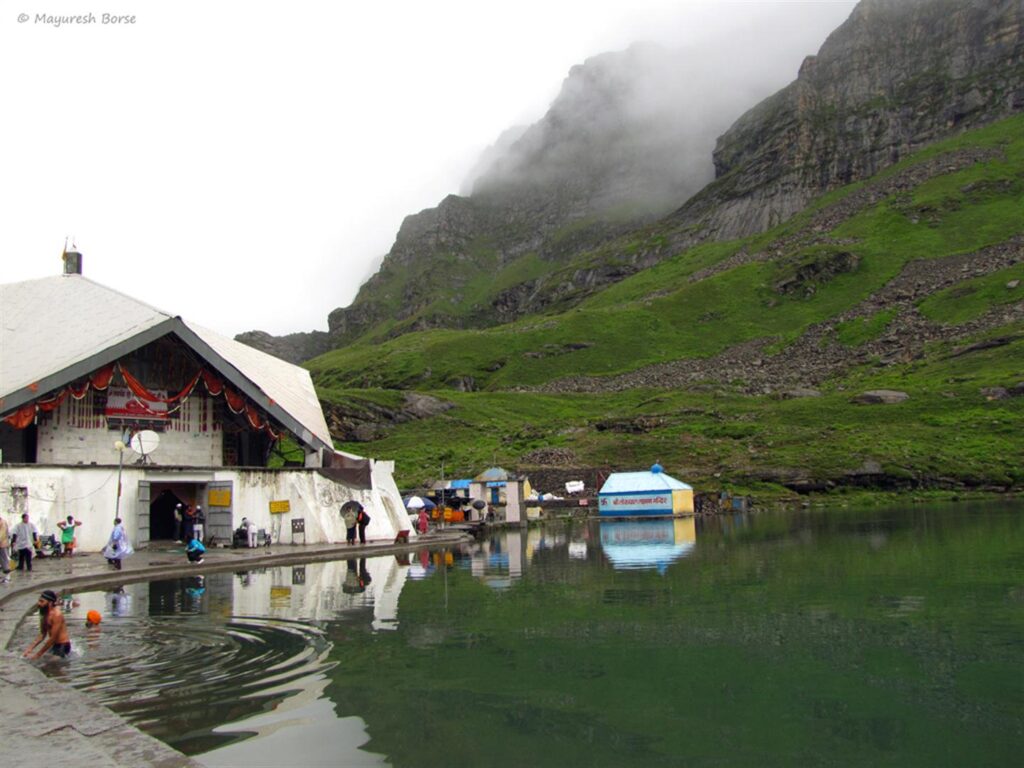
Places to stay
As mentioned before, your base for these treks is Ghangaria. Given the terrain, expect the stays to be basic. Lodges and guesthouses with electricity and essential amenities can be found here. Mobile network connectivity has improved in Ghangaria over the past few years.
Add-Ons!
At the end of your trek, you can visit two more gorgeous places nearby. Did you know Badrinath is only 25 kilometres from Govindghat? And the temple sees very little crowd during this season. After spending some time there, head to Mana – the last village on the Indo-Tibet border for a cup of steaming hot chai. Saraswati River originates near Mana and it has a big rock bridge, called as Bhim-pul which was laid over the rocks by Bhim, as per the Mythology.
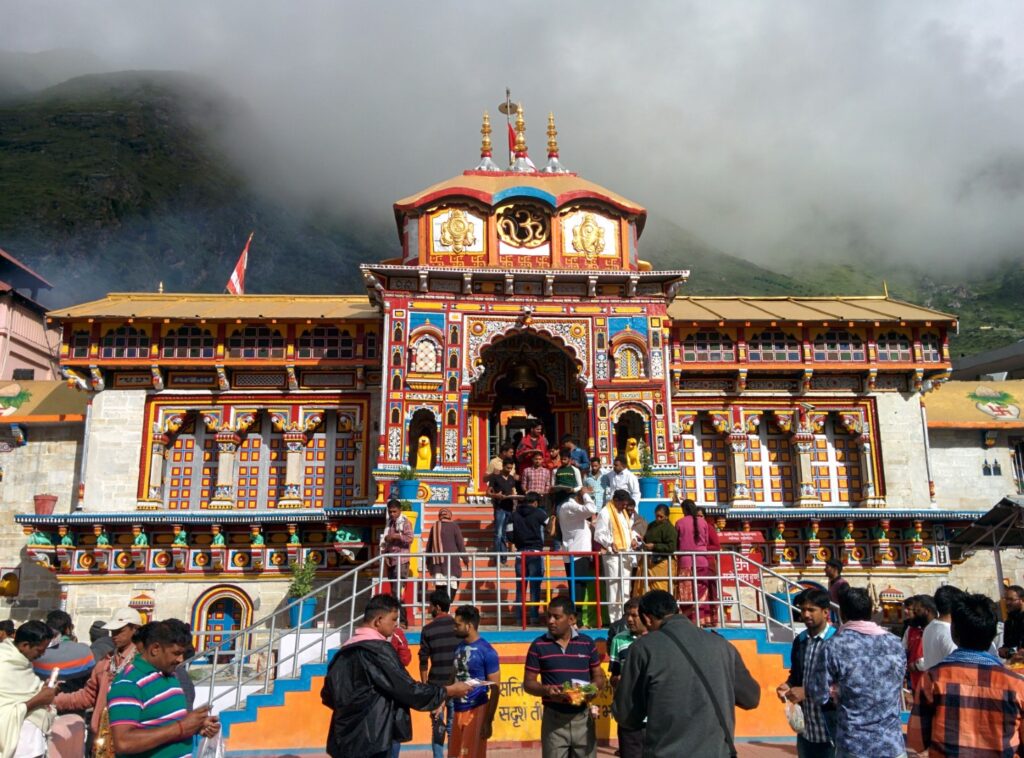
You can also head to Auli. Situated at a distance of 12 kilometres from Govindghat, Auli can also be reached by a ropeway! The 4-kilometre Auli Ropeway is one of the best tourist attractions in Uttarakhand.
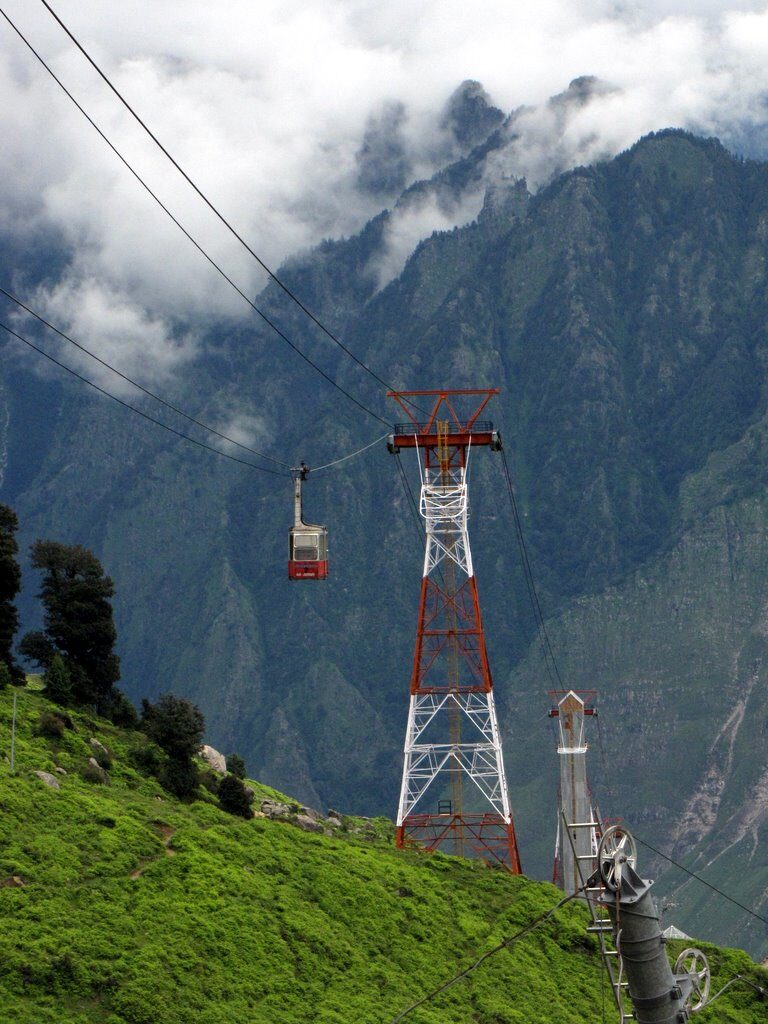
Foliage Outdoors can customise the add-ons on your next Valley of Flowers trek.
While on the topic, also check out the fun heritage and cultural references to the Valley of Flowers. Click Here
Will I get altitude sickness?
Hemkund Sahib is located at an altitude of 14203 feet! The ascent to Hemkund Sahib is a challenging one and few people who trek on this route can experience symptoms like dizziness, headache, and nausea. Note that this is perfectly normal!
By adopting a few useful techniques, you can minimize or even eliminate altitude sickness. Do not rush up, trek slowly and steadily. Smaller steps combined with frequent breaks will do the trick. Make sure to take deep breaths. Having said that, always watch out for signs of uneasiness.
The most important thing to note is that we do NOT stay at this altitude. We spend only an hour or hour and a half here and more often than not, by the time you feel uneasy you would have already begun your descent!
Of all the valleys in the Himalayas, what makes the Valley of Flowers so special?
The Valley of Flowers National Park is known for its exceptionally beautiful and remote mountain wilderness. This high-altitude Himalayan valley is best known for its gentle landscapes and meadows of alpine flowers,. The valley’s floral diversity is greatly attributed to its unique location. The valley reflects a geographical transition between Zanskar ranges in the north and Great Himalaya ranges in the south, and also between the Eastern and Western Himalaya biogeographic zone. And for this reason, the Valley of Flowers is today a UNESCO World Heritage Site.
Moreover, the remoteness and limited access to the valley has ensured that the natural habitats here are relatively undisturbed. These habitats include small forests, river beds, meadows, and even some caves! The brightly coloured flowers are supported by characteristic cushion herbs and shrubs, making the entire valley look like a paradise.
The trek to Valley of Flowers certainly is a trek that will take you away from the chaos of the city-life. Be assured all the trips and treks at Foliage Outdoors are carefully planned, with safety being the priority. Our travel advisors will explain you all the ravel-related safety measures that you need to know at every step of the way. A worry-free holiday awaits you!
Looking for ready itineraries for Valley Of Flowers? : Click Here
Does Infinite Journeys have fixed departure Group Tours to Valley Of Flowers?
Yes, under the banner of Foliage Outdoors, which is our sister-concern, we do have Fixed Departure Tours for The Valley of Flowers Trek
Click here for details
Can Infinite Journeys customize holidays for you?
Yes. Infinite Journeys specializes in customizing your holidays. Infinite Journeys has Travel Advisors who are well traveled and experienced. They will be happy to share their expertise with you to make your holidays memorable.
At Infinite Journeys, we believe that you should never buy a product off-the-shelf when you can have one that is customized for you.
To help us customize your holidays, we request you to fill the two forms below. It takes 6 minutes only and helps us to customize your holidays.
(This is optional)
1) Tell us about your “Travel Personality” Click Here
2) Details of your Travel Plans Click Here
How to get in touch with us?
1. Please write to web@infinitejourneys.in
2. Call +91.7745866888 / +91.9822508986
3. Click Here for Whats App Chat
4. Visit Office. For address and directions, Click Here
Author : Rahul Bhusari and Aaditee Kulkarni
More about Rahul on : Click Here


